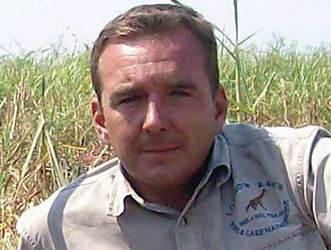
Redefining Le Grande K, aka the kilogram
Mike Edwards
Features Cameron Instruments Le Grande K Metrology Tim Balazs
Tim Balazs I recently attended my first Metrology conference. In speaking with attendees, I learned what a Metrologists’ pet peeve is – explaining what they do!
By Tim Balazs
One attendee explained it quite clearly: “When asked what I do for a living and I explain I’m a Metrologist – they immediately reply: ‘Is it going to rain tomorrow?’” Now that is some serious science humour!
Metrolo-what? Metrology is the science of measurement. It establishes a common understanding for units of measurement, crucial in linking human activities – locally and worldwide. The basic question: How could humans make sense of quantities, distance, etc., and then compare these accurately with other humans?
We have basic requirements – first the definition of units of measurement, second the realization of these units of measurement in practice, and finally, traceability. Quite simply — in order to interact communally we have to agree on basic definitions, find a way to demonstrate them physically and in a manner that is repeatable.
The basic questions like: How much does that weigh? How long is that? How much can that hold? The answer – commonly agreed upon ‘units’ of measurement.
The evolution of units of measurement has a long and colourful history – a reflection of mankind’s creativity and ingenuity. Unfortunately, the variations of the units between countries or cultures was as wide, varied and diverse as mankind itself.
For example, ‘surface area’ was defined differently depending on where you came from. In Ireland, for example, the unit was a ‘cow’s grass’ — defined as the amount of land that could produce enough grass to support a cow. In England, the unit became the ‘acre’ and was defined as the maximum area that could be ploughed by an ox in a single day.
Units for length were many times based on our own body parts, which was exceedingly convenient as everyone was carrying around their measurement tools. Units like a’ hand’ — defined as the span from the end of the thumb to end of the little finger when out-stretched, or a ‘finger’, or a ‘foot’, or the length of the king’s forearm, or a ‘gird’ – the circumference of a person’s waist.
Problem here is not all hands, feet and waists are the same size and what happened when the king died. Did the new king mean that a new unit of measure became introduced?
Units for volume were measured by how many plant seeds it took to fill up a gourd or vessel and then they were counted. A commonly used seed was the ‘carob’ seed, also used as a ‘unit’ of early weight defining practices. In fact, the legacy of the carob seed lives on today as it evolved to become the ‘carat’ – still used as a unit to define gems.
Units of time were defined by natural phenomenon like periods of the sun, moon, and other heavenly bodies and of course the colloquial sand through the hour glass. Wait a minute – how much sand? How big is this hour glass you refer to?
All of these units of measure, as demonstrated by these examples, are very isolated and relative to the region, country, culture, or the changing time periods. It seems clear at this point that we need to find some common ground as we begin to define various units of measurement.
Tim Balazs is Inside Sales Coordinator at Cameron Instruments in Guelph, ON. This article is the first in a series of blogs on metrology, prompted by the recent redefinition of the kilogram to the Planck constant, also known as (aka) Le Grande K.
Print this page